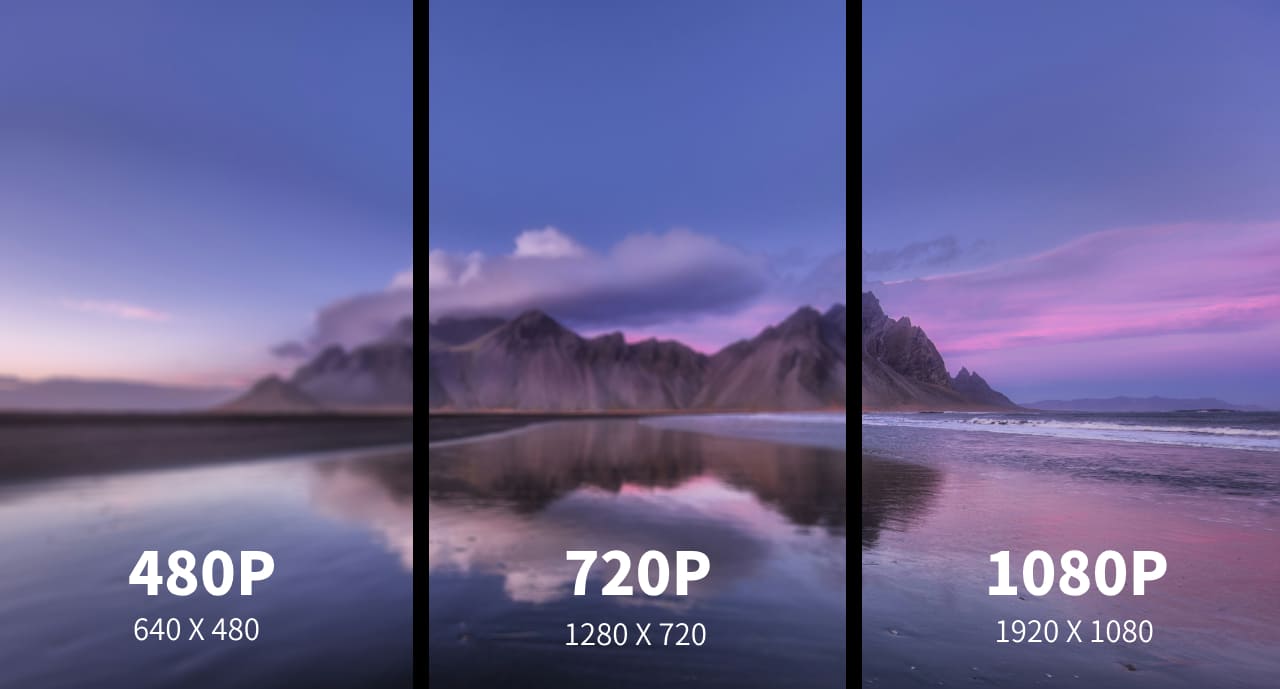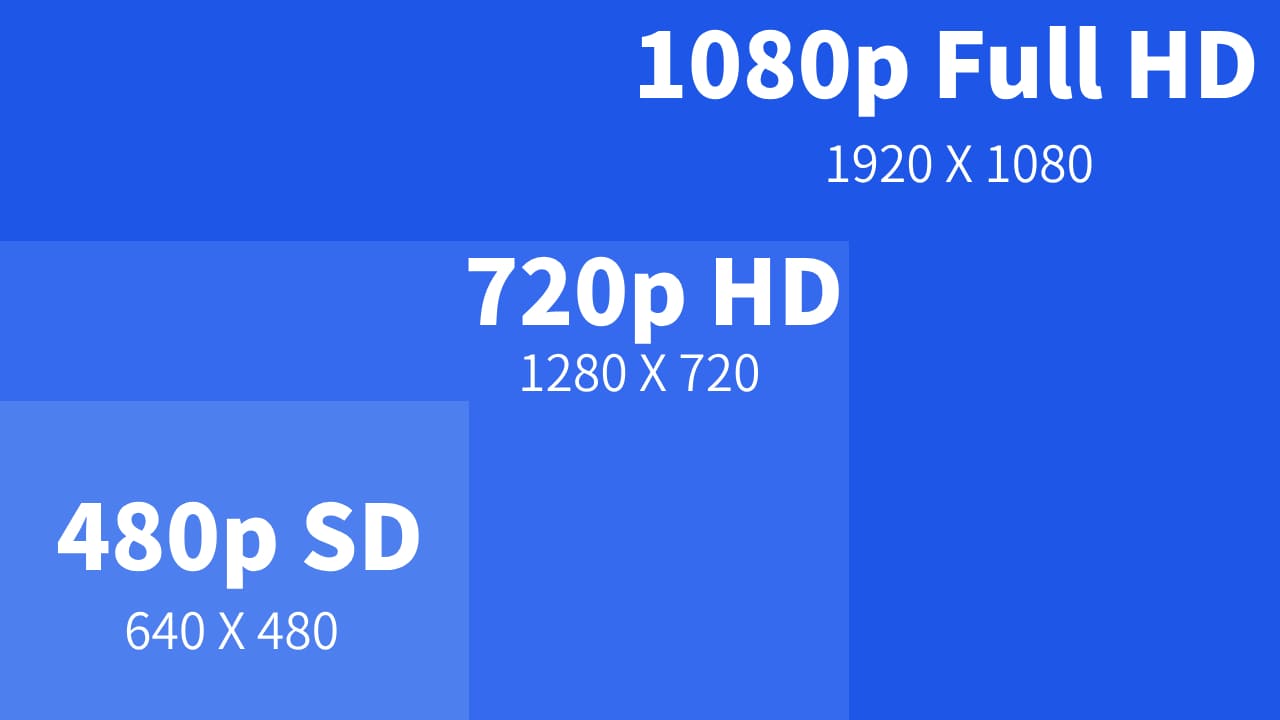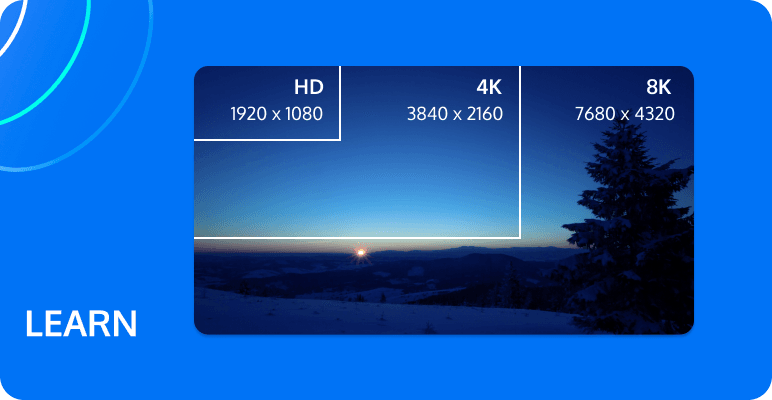Pixel Progression: 480p vs 720p vs 1080p
In today's digital media landscape, the clarity and smoothness of video playback are pivotal to enhancing viewer engagement and satisfaction. The choice of video resolution, from standard 480p to high-definition 720p, and full high-definition 1080p, plays a crucial role in the overall viewing experience.
Understanding Resolutions
The term 'video resolution' refers to the number of distinct pixels that can be displayed in each dimension on a display screen. Essentially, it is the composition of the video image that determines the detail and clarity of the picture. Standard definitions like 480p, the high definition of 720p, and the full high definition of 1080p offer increasing levels of detail and sharpness.
1. 480p: Defined as "standard definition," 480p resolution comprises 480 horizontal lines, offering basic clarity suitable for smaller screens or instances where bandwidth is a constraint.
2. 720p: High Definition- As the threshold for high-definition video, 720p enhances visual detail significantly with 720 horizontal lines, optimizing the balance between quality and bandwidth for medium-sized screens.
3. 1080p: Full High Definition- Marking the pinnacle of high definition, 1080p provides an immersive viewing experience with detailed imagery and lucid textures facilitated by 1080 horizontal lines, ideal for larger screens and where bandwidth availability is higher.

Resolution Considerations
Resolution is more than a mere number; it captures the essence of visual detail and influences the audience's perceptual experience profoundly. As we traverse from the realm of 480p through 720p and onto 1080p, it's pivotal to embrace a layered understanding of how each resolution impacts the viewer's engagement and the content's fidelity.
When choosing among the different resolutions of 480p, 720p, and 1080p, consider the following factors to make a decision:
1. Display device's resolution and screen size:
If the resolution of the viewing device is low (such as older TVs or smartphones), then choosing 480p might be sufficient, as higher resolution videos may not fully utilize their advantages on these devices.
For devices with a resolution of 720p, such as some medium-sized TVs and computer monitors, choosing 720p video is an appropriate choice.
For devices with a resolution of 1080p or higher, such as large-sized TVs, high-resolution computer monitors, or high-end smartphones, choosing 1080p video can provide a better viewing experience.
2. Network bandwidth and data caps:
If the network bandwidth is limited or subject to data caps, choosing 480p can reduce data transfer volumes and improve playback smoothness.
If the network condition is good, you can choose 720p or 1080p to obtain higher picture quality. It should be noted that higher resolution videos require more bandwidth and data.
3. Storage space:
If storage space is limited, choosing 480p can save space. Higher resolution video files are usually larger and occupy more storage space.
If ample storage space is available, you can opt for 720p or 1080p for higher picture quality.
4. Video content and quality requirements:
For some video content that does not require high quality, such as news reports or interview programs, 480p may be sufficient.
For higher quality video content, such as movies, TV dramas, and sports events, choosing 720p or 1080p can provide a better viewing experience.
In conclusion, when choosing between 480p, 720p, and 1080p, you need to consider factors such as the resolution and screen size of the display device, network bandwidth and data restrictions, storage space, as well as the video content and quality requirements. In practice, you can flexibly select the appropriate resolution based on specific situations to meet different needs and viewing conditions.

Tencent MPS Advantages
Tencent MPS introduces an innovative approach to handling video resolutions, from 480p to 1080p and beyond. It achieves a remarkable balance between bitrate savings and quality preservation, leveraging advanced encoding technologies that minimize data consumption without sacrificing visual fidelity. For ultra-high-definition (UHD) content, including 8K, Tencent MPS provides exceptional enhancement services that uplift the viewing experience to unprecedented heights. Through adaptive bitrate streaming, reduction in cross-continental transmission latency, and robust support for real-time UHD transcoding, Tencent MPS ensures that every viewer enjoys optimal media delivery, regardless of their bandwidth conditions or device specifications.
Conclusion
Choosing the right video resolution is instrumental in achieving the desired impact on audiences, be it through sharp, engaging visuals in 1080p or seamless streaming in lower resolutions. Tencent MPS stands out by empowering content creators with flexible, efficient solutions that accentuate video quality across the spectrum of resolutions. It demonstrates how technological innovation can significantly amplify viewer experience and satisfaction, making every pixel count in the vast world of digital media.
You are welcome to Contact Us for more information.

